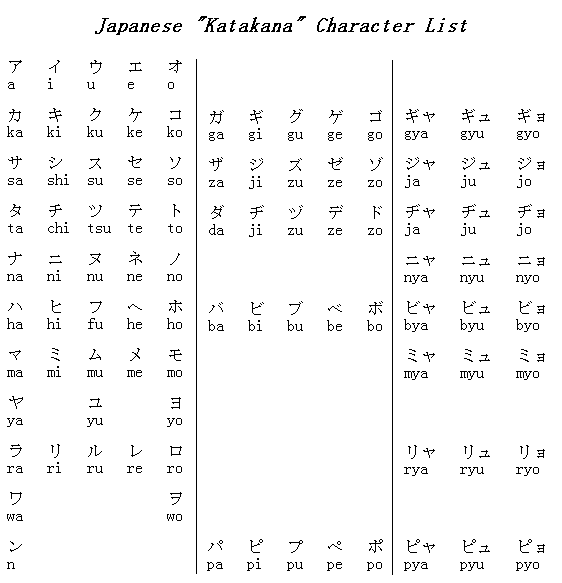Hiragana & Katakana
平仮名 (ひらがな)
Hiragana syllables developed from Chinese characters, as shown below. Hiragana were originally called onnade
or ‘women’s hand’ as were used mainly by women – men wrote in kanji and
katakana. By the 10th century, hiragana were used by everybody. The
word hiragana means “oridinary syllabic script”.The hiragana syllabary
consists of 48 syllables and is mainly used to write word endings, known
as okurigana in Japanese. Hiragana are also widely used in
materials for children, textbooks, animation and comic books, to write
Japanese words which are not normally written with kanji, such as
adverbs and some nouns and adjectives, or for words whose kanji are
obscure or obselete.

片仮名 (カタカナ)
The katakana syllabary was derived from
abbreviated Chinese characters used by Buddhist monks to indicate the
correct pronunciations of Chinese texts in the 9th century. At first
there were many different symbols to represent one syllable of spoken
Japanese, but over the years the system was streamlined. By the 14th
century, there was a more or less one-to-one correspondence between
spoken and written syllables. The word katakana “part (of kanji)
syllabic script”. The “part” refers to the fact that katakana characters
represent parts of kanji.
The katakana syllabary
consists of 48 syllables and was originally considered “men’s writing”.
Since the 20th century, katakana have been used mainly to write
non-Chinese loan words, onomatopoeic words, foreign names, in telegrams
and for emphasis (the equivalent of bold, italic or upper case text in
English). Before the 20th century all foreign loanwords were written
with kanji. Katakana are also used to writ Ainu, a language spoken on
the northern Japanese island of Hokkaid

Tidak ada komentar:
Posting Komentar